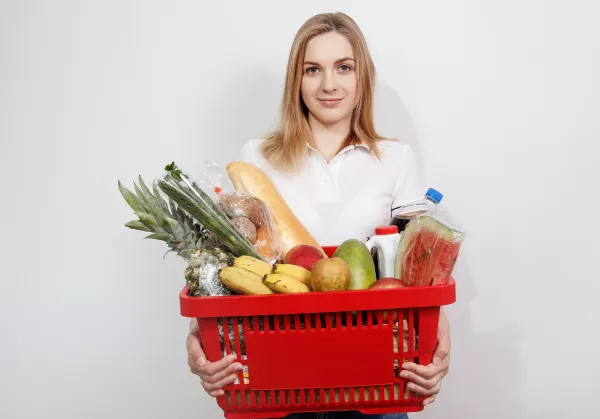By October 17, inflation in Russia in annual terms slowed down to 13.1% from 13.36% a week earlier, according to the review of the Ministry of Economic Development "On the current price situation." According to Rosstat, weekly inflation in Russia slowed slightly to 0.02% from 0.03% a week earlier, from the beginning of the year to October 17, consumer prices rose by 10.55%. Prices for food products increased by 0.08% over the week, which was mainly due to the acceleration of the seasonal rise in prices for fruits and vegetables. For other food products, prices have been falling for the second week in a row.
The increase in prices for fruits and vegetables somewhat accelerated - in the week from October 11 to October 17, they rose by 1.2% after 1.1% a week earlier. Including tomatoes rose in price by 5%, bananas - by 3.4%, cucumbers - by 1.9%, cabbage - by 1.3%, potatoes - by 0.9%, beets - by 0.4%, onions — by 0.3%. At the same time, prices for carrots and apples fell by 1.4%.
The rise in prices for eggs continued, however, the rates decreased to 1.86%. Milk became more expensive by 0.5%, sour cream - by 0.38%, butter - by 0.27%. At the same time, buckwheat and sugar became cheaper by 0.99% and 0.56%, respectively. Prices for flour, canned vegetables and powdered milk mixtures, tea, biscuits and boiled sausage also slightly decreased.
The rise in prices for vegetables is a seasonal phenomenon, said Dmitry Rylko, director general of the Institute for Agricultural Market Studies. Further dynamics of food prices, he said, will depend heavily on the exchange rate of the ruble. There are no big concerns and risks for key commodities yet, the expert said to Agroinvestor. “Everything is going very smoothly. We don't see any big risks. A number of markets look oversaturated, the main problem there is not the level of inflation, but how to keep current prices,” Rylko added.
Vice-President of the Russian Grain Union (RGU) Alexander Korbut told Agroinvestor that the cost of vegetables is affected, in particular, by bad weather for harvesting - heavy rains in a number of regions. He also does not expect a sharp rise in prices for any food groups. “We are unlikely to see a decrease in consumer prices for bakery products. Meat is under pressure from price restrictions and depends on the income of the population,” Korbut commented. He noted that now we are reaching the level of inflation, which was formed back in January-February.
A few days ago, the Accounts Chamber published its opinion on the draft federal budget for the next three years. It says that the forecast of the Ministry of Economic Development for inflation in Russia at the end of the current year at 12.4% is overly optimistic. The ministry’s forecast assumes that after a price shock in the spring (by May 6, annual inflation reached 17.8%) against the backdrop of a weakening ruble exchange rate and a decrease in consumer demand, inflation will slow down to 12.4% by the end of 2022, reminded the Accounts Chamber.
However, according to the auditors, taking into account the current inflation, in order to achieve the forecast indicator, prices in October-December should grow at a rate of no more than 0.6-0.7% per month. The inflation forecast for 2023 – 5.5% – also appears to be understated against the backdrop of rising world prices, increased imports, weakening of the ruble and the expected recovery of household incomes. According to the forecast of the Bank of Russia, annual inflation in 2022 will be 11-13%, and in 2023 it will slow down to 5-7%.
© Inline LLC 2015-2025. Privacy Policy | Terms of Service